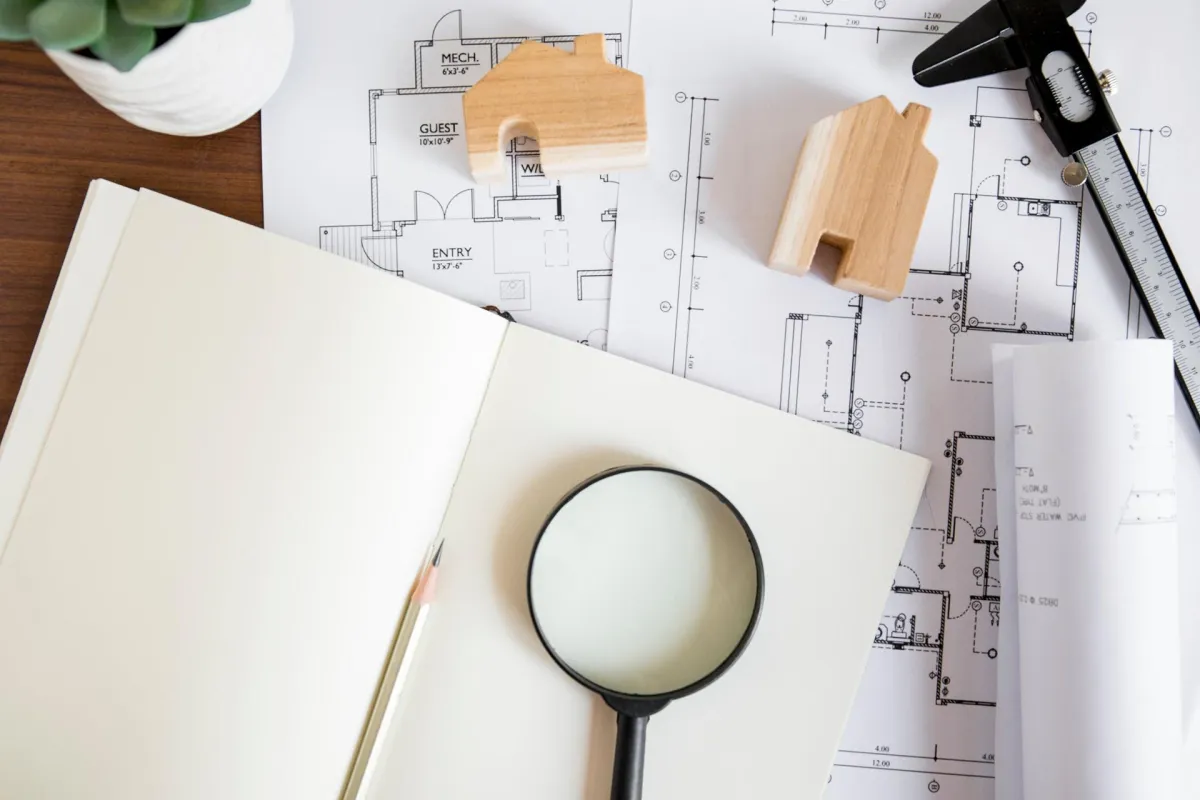Blog

How to Read a Home Inspection Report Like a Pro
Introduction
So, you’ve received your home inspection report — a detailed document filled with photos, checkmarks, and unfamiliar terms. Now what?
Whether you’re buying your first home in Plainfield, IL or selling a property you’ve lived in for years, understanding your inspection report is key to making confident decisions. Many clients feel overwhelmed by the technical language or length of the report, but reading it the right way helps you separate major concerns from routine maintenance items.
In this guide, Smart Choice Home Inspections walks you through how to read and interpret your home inspection report like a pro, what to focus on first, and how to use it to plan next steps.
What a Home Inspection Report Really Is
A home inspection report is a professional summary of a property’s condition at the time of inspection. It’s designed to provide objective, detailed insight into the home’s systems, structure, and safety.
While the format can vary slightly between inspectors, most modern reports include:
Summary section: Quick overview of major findings and safety concerns
Detailed sections: Room-by-room or system-by-system breakdowns (roof, HVAC, plumbing, electrical, etc.)
Photos and descriptions: Visuals highlighting defects or maintenance issues
Condition ratings: Indicators such as “Satisfactory,” “Marginal,” or “Repair Recommended”
Recommendations: Suggested repairs, replacements, or further evaluations
At Smart Choice Home Inspections, we use clear language and color-coded reports to make it easy for Plainfield clients to understand which issues need attention now versus later.
Key Sections to Focus On First
While it’s tempting to skim through the report, focusing on these core sections helps you quickly identify what matters most.
1. Summary or Major Findings
Start here. This section outlines the most significant safety hazards or expensive repairs — such as roof leaks, foundation cracks, or electrical concerns.
These items often become negotiation points during a home purchase.
2. Structural Components
Look at the foundation, framing, and roof sections. These are the backbone of your home’s integrity. Structural defects can be costly, so pay attention to any mention of cracks, water intrusion, or settlement.
3. Mechanical Systems
This covers heating, cooling, plumbing, and electrical systems. Note the age and condition of key components like furnaces, water heaters, and main electrical panels.
4. Roof and Exterior
Check for issues like worn shingles, missing flashing, or poor drainage. These exterior problems often lead to interior damage if not addressed.
5. Safety Concerns
Anything labeled as a safety issue should move to the top of your list — examples include exposed wiring, missing handrails, carbon monoxide risks, or outdated smoke detectors.
How to Read a Home Inspection Report Step-by-Step
Once you understand the layout, approach the report methodically. Here’s how to make sense of it — just like a professional would.
Step 1: Start with the Summary
This gives you the big picture. Identify any items marked “Significant,” “Safety,” or “Major Repair Needed.” These deserve your immediate attention.
Step 2: Prioritize by Severity
Create three categories:
Immediate Repairs: Safety or system failures
Upcoming Maintenance: Items showing early wear
Minor Cosmetic Issues: Aesthetic or easy fixes
This approach prevents feeling overwhelmed and helps with budgeting.
Step 3: Read the Inspector’s Notes Carefully
Professional inspectors often include helpful context such as “appears serviceable,” “monitor,” or “recommend evaluation by licensed contractor.” These notes clarify urgency and next steps.
Step 4: Review Photos and Captions
The images often show exactly where a problem exists. Use them as a visual guide during walk-throughs or when discussing repairs with contractors.
Step 5: Compare with Disclosure or Seller Information
If you’re a buyer, cross-reference the report with the seller’s property disclosures. This helps ensure transparency and strengthens your negotiation position.
Step 6: Plan Your Response
Decide how to proceed:
Buyers: Negotiate repairs, request credits, or accept as-is with full understanding.
Sellers: Fix key issues proactively to build buyer confidence.
Homeowners: Use the report as a maintenance checklist.
Pro Tips for Interpreting Inspection Language
Home inspection reports use neutral, factual language — not alarmist terms. Understanding how to interpret them helps you stay objective.
“Appears serviceable” means it’s functioning but not new — monitor it.
“Recommend further evaluation” suggests the inspector found signs of an issue requiring a specialist’s opinion.
“Safety concern” indicates an immediate hazard needing prompt correction.
“Deferred maintenance” points to neglect or delayed upkeep that could worsen over time.
Remember: the goal of an inspection isn’t to find perfection, but to give you knowledge for informed decisions.
Frequently Asked Questions
How long should I spend reviewing my home inspection report?
Plan at least 30–60 minutes to review the report carefully. Focus on the summary first, then the systems most relevant to your concerns.
Is every issue in the report serious?
No. Many findings are minor or maintenance-related. The key is distinguishing between major safety or structural issues and small fixes.
Can I ask my inspector questions after the report?
Yes — and you should. At Smart Choice Home Inspections, we encourage clients to call or email with follow-up questions for clarification.
Will my report tell me how much repairs will cost?
Not typically. Inspectors describe conditions, but pricing depends on contractors and local labor costs. However, you can use the report to gather accurate quotes.
Can I share my report with contractors or buyers?
Absolutely. Sharing the report helps everyone work from the same facts, reducing confusion during negotiations or repairs.
Conclusion
Reading your home inspection report doesn’t have to feel overwhelming. Once you understand its structure and key terms, it becomes a powerful roadmap for maintaining, negotiating, or improving your home’s condition.
At Smart Choice Home Inspections, we pride ourselves on delivering clear, detailed, and easy-to-read reports for Plainfield homeowners. Our goal is to empower you with confidence — whether you’re buying, selling, or simply staying informed about your property.
Client Reviews and Testimonials
Our Services
Helpful Links
© 2025 All Rights Reserved | Smart Choice Home Inspections
